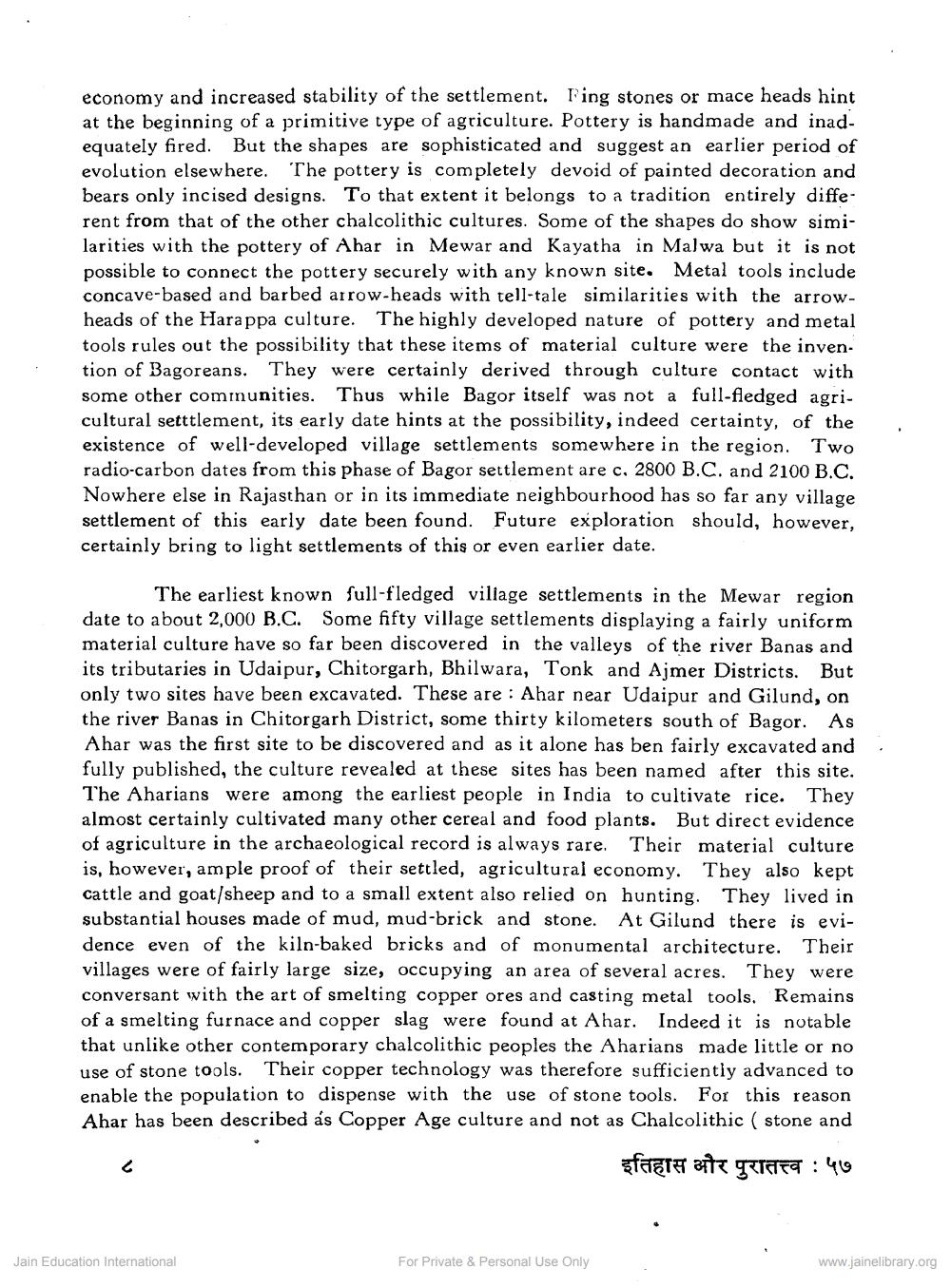Book Title: Prehistoric Background of Rajasthan Culture Author(s): V N Misra Publisher: Z_Agarchand_Nahta_Abhinandan_Granth_Part_2_012043.pdf View full book textPage 9
________________ economy and increased stability of the settlement. Ting stones or mace heads hint at the beginning of a primitive type of agriculture. Pottery is handmade and inad. equately fired. But the shapes are sophisticated and suggest an earlier period of evolution elsewhere. The pottery is completely devoid of painted decoration and bears only incised designs. To that extent it belongs to a tradition entirely different from that of the other chalcolithic cultures. Some of the shapes do show similarities with the pottery of Ahar in Mewar and Kayatha in Malwa but it is not possible to connect the pottery securely with any known site. Metal tools include concave-based and barbed arrow-heads with tell-tale similarities with the arrowheads of the Harappa culture. The highly developed nature of pottery and metal tools rules out the possibility that these items of material culture were the inven. tion of Bagoreans. They were certainly derived through culture contact with some other cominunities. Thus while Bagor itself was not a full-fledged agricultural setttlement, its early date hints at the possibility, indeed certainty, of the existence of well-developed village settlements somewhere in the region. Two radio-carbon dates from this phase of Bagor settlement are c, 2800 B.C. and 2100 B.C. Nowhere else in Rajasthan or in its immediate neighbourhood has so far any village settlement of this early date been found. Future exploration should, however, certainly bring to light settlements of this or even earlier date. The earliest known full-fledged village settlements in the Mewar region date to about 2,000 B.C. Some fifty village settlements displaying a fairly uniform material culture have so far been discovered in the valleys of the river Banas and its tributaries in Udaipur, Chitorgarh, Bhilwara, Tonk and Ajmer Districts. But only two sites have been excavated. These are : Ahar near Udaipur and Gilund, on the river Banas in Chitorgarh District, some thirty kilometers south of Bagor. As Ahar was the first site to be discovered and as it alone has ben fairly excavated and fully published, the culture revealed at these sites has been named after this site. The Aharians were among the earliest people in India to cultivate rice. They almost certainly cultivated many other cereal and food plants. But direct evidence of agriculture in the archaeological record is always rare. Their material culture is, however, ample proof of their settled, agricultural economy. They also kept cattle and goat/sheep and to a small extent also relied on hunting. They lived in substantial houses made of mud, mud-brick and stone. At Gilund there is evidence even of the kiln-baked bricks and of monumental architecture. Their villages were of fairly large size, occupying an area of several acres. They were conversant with the art of smelting copper ores and casting metal tools. Remains of a smelting furnace and copper slag were found at Ahar. Indeed it is notable that unlike other contemporary chalcolithic peoples the Aharians made little or no use of stone tools. Their copper technology was therefore sufficiently advanced to enable the population to dispense with the use of stone tools. For this reason Ahar has been described as Copper Age culture and not as Chalcolithic ( stone and इतिहास और पुरातत्त्व : ५७ Jain Education International For Private & Personal Use Only www.jainelibrary.orgPage Navigation
1 ... 7 8 9 10 11 12 13 14 15 16 17 18 19
